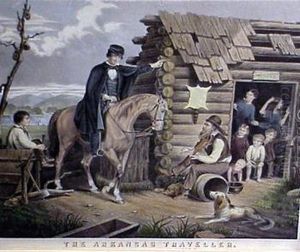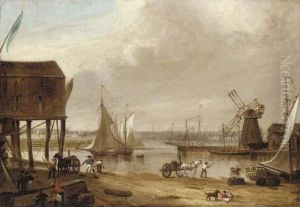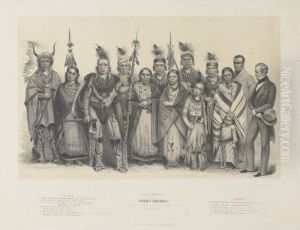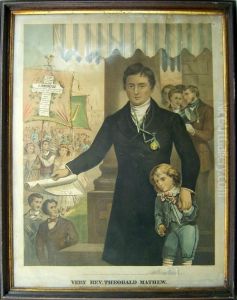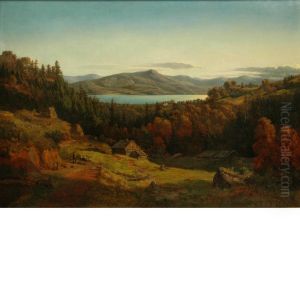John Henry Bufford Paintings
John Henry Bufford was an American lithographer and publisher born in Portsmouth, New Hampshire, in 1810. His career, spanning the mid-19th century, was marked by significant contributions to the field of lithography in the United States, particularly in Boston, Massachusetts, where he established his most successful operations. Bufford's work is distinguished by its variety and the quality of its execution, reflecting the evolving American tastes and interests of his time.
After an apprenticeship with the Pendleton brothers, who were pioneers of lithography in America, Bufford worked in New York before moving to Boston. In Boston, he became the chief artist at B.W. Thayer & Co., one of the leading lithographic establishments in the country. By 1835, Bufford had ventured on his own, founding J.H. Bufford's Lithographic and Publishing Company. His firm specialized in a wide array of lithographic work, including portraits, landscapes, city views, and sheet music covers, as well as political and social satire.
Bufford's enterprise thrived during a period when the demand for lithographic images was growing, fueled by advancements in printing technology and an expanding middle class eager for art and illustration. His works were known for their detail, color, and artistic quality, making them popular among both the public and private collectors. Bufford was also a key figure in the development of chromolithography, a process that allowed for the mass production of prints in color, significantly influencing the accessibility and popularity of visual arts in America.
Throughout his career, Bufford trained and employed numerous artists, some of whom would go on to achieve their own fame. His influence extended beyond his immediate circle, contributing to the rise of Boston as a center for lithography in the United States. Despite the success, the intense competition and the economic fluctuations of the era posed challenges to his business.
John Henry Bufford passed away in 1870, but his legacy lived on through his sons, who continued to operate the lithographic firm under the name Bufford's Sons Lithography. Today, Bufford's works are held in high regard, with examples found in major museums and private collections, serving as valuable documents of American cultural and historical life in the 19th century.
